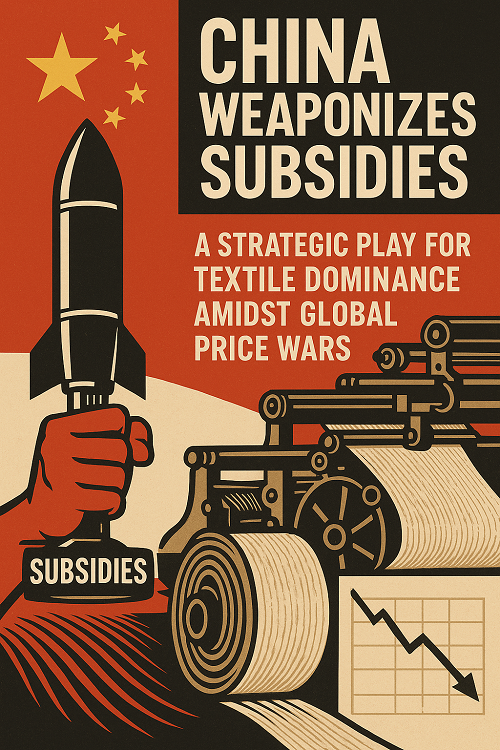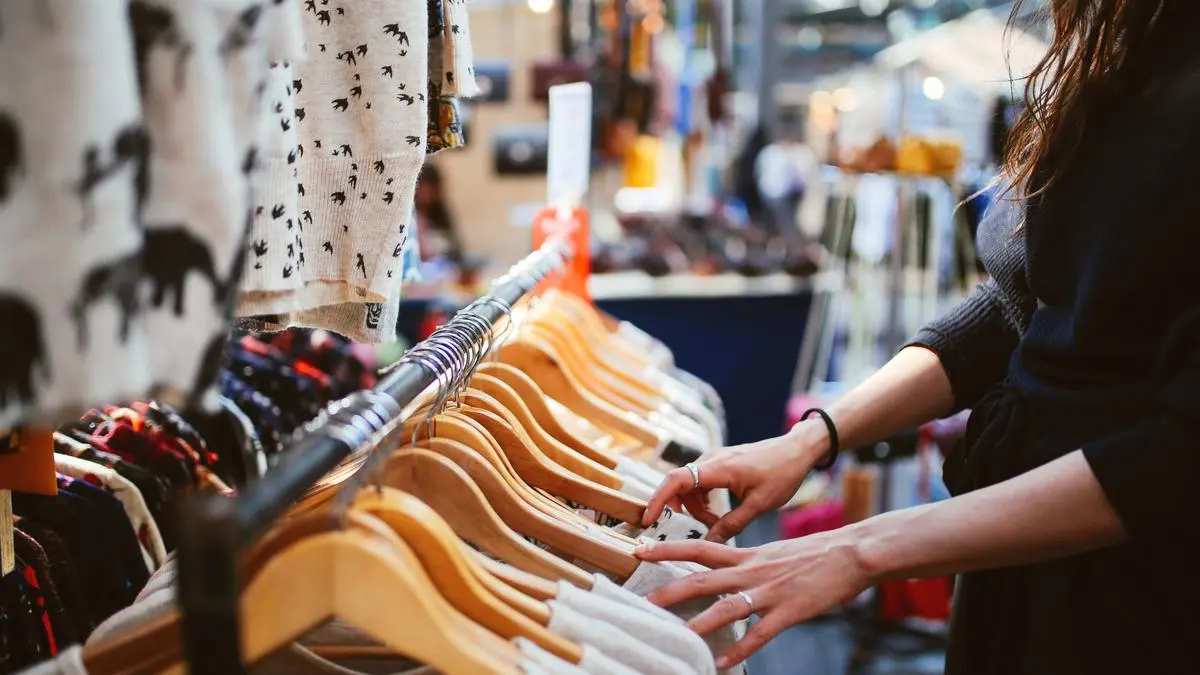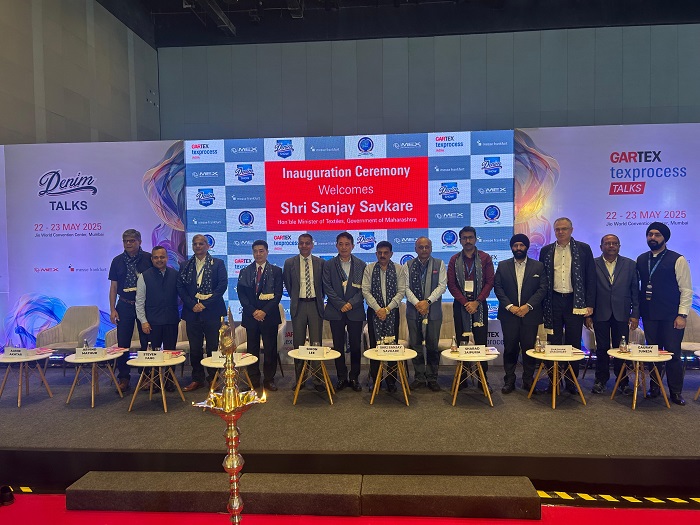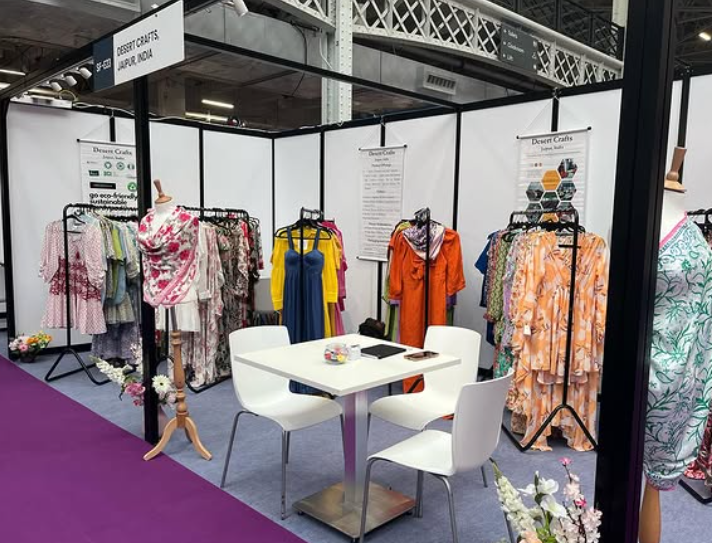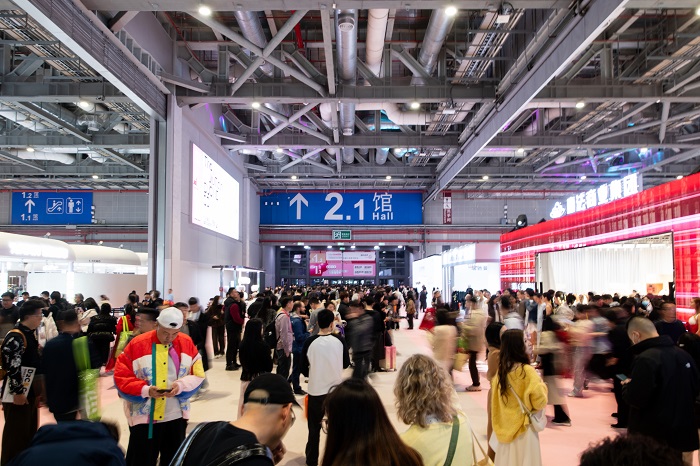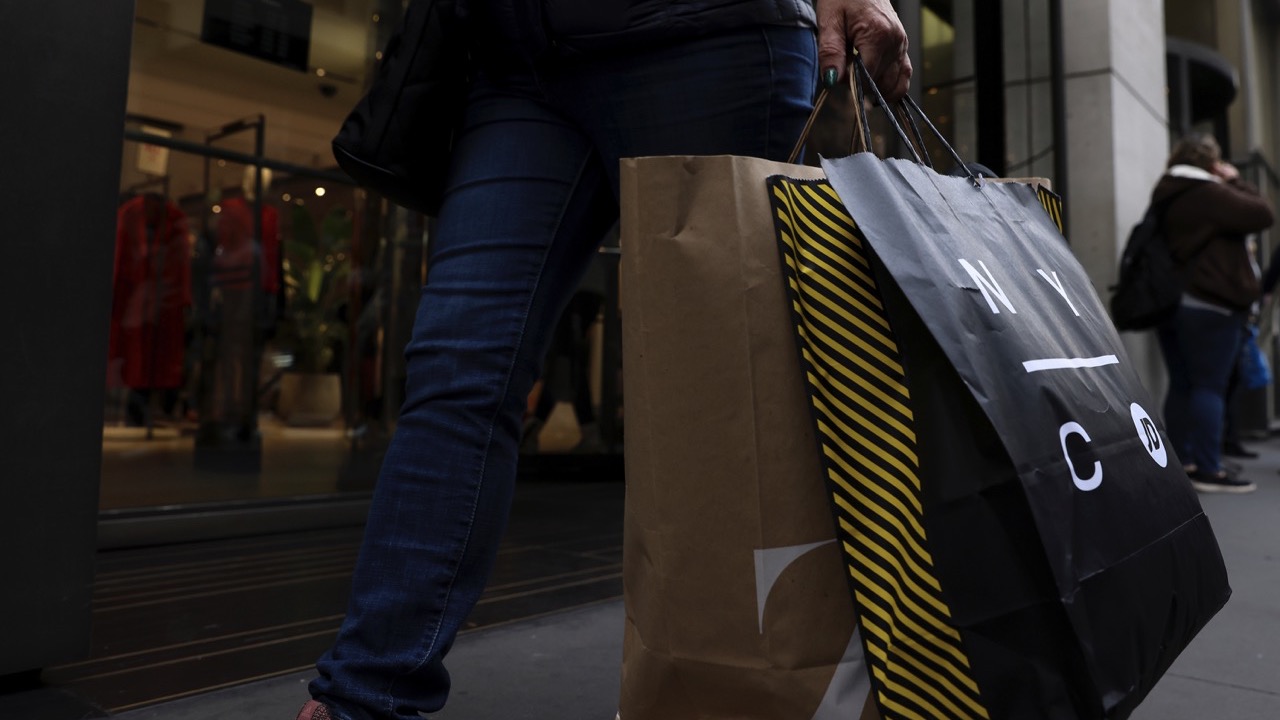Prime Minister Narendra Modi is set to inaugurate the Global Textile Expo-Bharat Tex 2024 on February 26, 2024 in New Delhi. According to Rachna Shah, the Secretary of the Ministry of Textiles, the four-day-long event will span over 22 lakh sq ft across Bharat Mandapam and Yashobhoomi.
Buyers from around 100 countries are expected to participate in the exhibition alongwith around 100 international speakers.
The expo presents a unique opportunity to showcase India's textile value chain strength on an international platform, says Shah. Organised by a consortium of 11 Textile Export Promotion Councils and supported by the Ministry of Textiles,
Bharat Tex is founded on the principles of trade and investment, with a significant emphasis on sustainability and resilient supply chains. The Ministry plans to sign 46 MOUs during the event, including collaborations on an international scale. Moreover, the Expo will mark the launch of the Textiles Grand Innovation Challenge, aimed at identifying forward-thinking circular solutions for the textile industry.
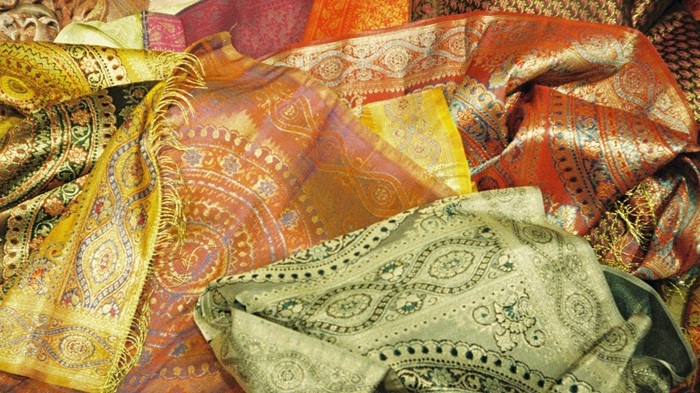
In the wake of China's staggering 67 per cent decline in raw silk production between 2017 and 2021, India appeared poised to ascend as the global leader in raw silk exports. However, this anticipated shift failed to materialize, as India's silk industry grappled with inertia and a lack of proactive measures to seize the initiative.
Global silk production dynamics: China and India dominate
China and India collectively dominate the global silk production landscape, accounting for approximately 95 per cent of the total output of 86,311 metric tonnes (MT), despite silk cultivation occurring in approximately 60 countries worldwide. China's production plummeted from 142,000 MT in 2017 to a mere 46,700 MT in 2021. Conversely, India's global share in 2021 stood at 36,543 MT.
Silk holds immense significance for India's economy, with the country producing all four commercially known varieties: mulberry, muga, eri, and tasar. Mulberry silk alone constitutes about 74 per cent of the total production. Moreover, the sericulture industry provides employment to approximately 9.2 million individuals in rural and semi-urban areas.
Despite India's potential, its silk industry has failed to capitalize on existing infrastructure. Alarming statistics presented in the 54th report of the Parliament of India's Standing Committee on Labour, Textiles, and Skill Development underscore the magnitude of the challenge. Across states like Chhattisgarh, Madhya Pradesh, Uttar Pradesh, Andhra Pradesh, and Karnataka, production targets have woefully lagged behind actual output, with various factors cited including adverse climatic conditions impacting tasar silk production.
Rising imports exacerbate concerns
Compounding the issue of sluggish production, India's reliance on silk imports is on the rise. Raw silk imports, which constitute 70 per cent of the total silk imports by value, have witnessed a significant uptick. This surge, attributed to heightened domestic demand post-COVID-19, underscores the widening gap between production and industry requirements.
India's silk exports have witnessed a decline in value from Rs 20,318.8 million in 2018–19 to Rs 17,733.8 million in 2022–23. Economic downturns and geopolitical conflicts have been cited as primary drivers of this decline. To mitigate this trend, exploring alternative markets beyond traditional ones like the UAE, USA, and EU becomes imperative.
The Central Silk Board (CSB), tasked with spearheading sericulture industry development, faces critical manpower shortages, with a significant portion of sanctioned positions remaining vacant. Operational inefficiencies stemming from retirements and recruitment challenges further compound the issue, jeopardizing the CSB's pivotal role in advancing the sector.
Branding deficiencies, exemplified by the voluntary nature of Silk Mark labels, pose challenges to ensuring product authenticity and market competitiveness. Additionally, stalled projects and low disbursal rates underscore systemic inefficiencies and underscore the need for streamlined coordination mechanisms and enhanced project execution frameworks.
Way forward: Urgent remedial actions required
To revitalize India's silk industry, urgent remedial actions are imperative. These include enhancing productivity through research and development, bolstering quality control measures, diversifying export markets, addressing manpower shortages, enforcing branding standards, and streamlining project execution processes. Only through concerted efforts and proactive interventions can India reclaim its position as a global silk powerhouse.

In a concerted effort to tackle audit and standard fatigue plaguing the apparel and textile sector, the International Apparel Federation (IAF) and the International Textile Manufacturers Federation (ITMF) have issued a clarion call to industry stakeholders. Emphasizing the urgency of the matter, they urge stakeholders to prioritize addressing audit fatigue in the wake of escalating demands for responsible purchasing practices.
Key directives outlined by the IAF and ITMF include advocating for the adoption of third-party standard frameworks over proprietary standards and endorsing the Social & Labor Convergence Program's Converged Assessment Framework (CAF) as a promising avenue for streamlining social auditing processes.
Furthermore, the manifesto underscores the need for standard holders to minimize unnecessary discrepancies in standards, enhancing efficiency across the supply chain. The Standard Convergence Initiative (SCI), spearheaded by IAF and ITMF, seeks to align industry initiatives and proprietary tools to alleviate audit burdens on suppliers.
Highlighting recent progress, the manifesto points to the Social & Labor Convergence Program's success in driving converged assessments, with over 7000 facilities worldwide opting for SLCP verified assessments in 2022 alone. Additionally, collaborations with leading schemes and standard holders aim to facilitate data sharing and alignment, further alleviating duplication in verification processes.
The SCI's impassioned plea urges all stakeholders to embrace standardized frameworks and collaborate towards industry-wide compatibility, paving the way for a more efficient and responsible supply chain ecosystem.

In a strategic move to bolster the landscape of retail trade in the UK, Spring & Autumn Fair, the nation's premier showcases for Home, Gift, and Fashion, has unveiled the establishment of a pioneering Advisory Board. Objective is to spearhead the ongoing refinement of these flagship events and foster a robust marketplace for British retailers.
Helmed by Stephen Spencer, Ambience Director at Stephen Spencer + Associates, the Advisory Board comprises a stellar lineup of 15 industry luminaries. Among them are notable figures such as John Halliday from the British Independent Retailers Association and Sarah Ward representing the Giftware Association. This diverse assembly brings to the table a wealth of expertise and perspectives essential for propelling the Spring & Autumn Fairs to new heights.
Jackson Szabo, Portfolio Director at Spring & Autumn Fair, expressed enthusiasm for this milestone, hailing it as a pivotal moment in the annals of these venerable exhibitions. With Spring Fair's illustrious 70 year history and Autumn Fair's 30 year legacy, the formation of the Advisory Board signifies a dedicated commitment to fostering innovation and sustainable growth within the retail sphere.
Integral to the Board's mission is its mandate to proactively discern emerging trends and capitalize on untapped opportunities within the retail landscape. By expanding the reach of the shows and optimizing the experiences of both exhibitors and visitors, the Board aims to fortify Spring & Autumn Fair's position as the cornerstone of the industry.
Chairman Stephen Spencer underscored the significance of collaboration and innovation in shaping the future trajectory of these seminal events. His extensive experience spanning three decades lends invaluable insights into the evolving dynamics of retail, underscoring the Advisory Board's proactive approach to future-proofing the shows.
Samantha Gibbs, Director of renowned retailer Nest, echoed the sentiment of unwavering support for Spring and Autumn Fair, emphasizing the pivotal role these exhibitions play in showcasing the industry's dynamism and innovation.
The involvement of longstanding exhibitors and key industry associations further underscores the Board's commitment to inclusivity and industry-wide collaboration. Their collective vision is geared towards not just sustaining, but propelling the Spring & Autumn Fairs into a dynamic future, ensuring their relevance in an ever-evolving business landscape.
In an era characterized by digital transformation and shifting consumer behaviors, the Advisory Board's formation signals a resolute commitment to preserving the vitality of face-to-face interactions and tangible product experiences offered by Spring & Autumn Fair. As these events continue to evolve, they remain steadfast in their mission to provide retailers with unparalleled opportunities to discover the latest trends and innovations across Home, Gift, and Fashion sectors.

The textile industry, a key pillar of the Indian economy, witnessed a mixed bag of results in Q3 of the 2023-24 financial year. While some companies like Arvind saw profits grow, others like Century Textiles struggled with revenue dips. This indicates differing responses to market pressures within the industry. Rising input costs, particularly cotton, impacted margins across segments. Manufacturers are navigating this by exploring alternative materials and operational efficiencies. A slowdown in global demand, especially from key export markets like the US and Europe is putting pressure on export-oriented companies.
Sectoral analysis
A look at various sectors in the textile industry throws up an interesting pattern.
Fibres: The fibre segment witnessed moderate growth, driven by rising demand for man-made fibres like polyester and viscose. Cotton prices remained high, impacting yarn and fabric costs. However, some players are exploring man-made fibers and value-added products for better margins. For example, RSWM reported a decline in revenue and profit, highlighting the challenges
Yarns: Yarn exports saw positive growth due to increased global demand, but domestic demand remained sluggish due to rising input costs and competition from cheaper imports. Yarn producers like Vardhman Textiles witnessed modest growth, indicating a cautious recovery in demand
Fabrics: Fabric exports showed signs of weakness, due to global economic slowdown and rising raw material prices. Domestic demand, however, showed signs of improvement, particularly in the premium segment. Fabric manufacturers like Siyaram Silk Mills saw stable performance, suggesting resilience in the segment.
Home textiles: This segment witnessed positive growth, driven by rising domestic consumption and increasing exports to non-traditional markets. Home textile companies like Welspun India experienced positive growth, driven by rising domestic demand and exports.
Export performance
Export volume and value witnessed a decline in Q3 due to global slowdown and rising costs. Key export markets like the US and Europe remained subdued due to economic uncertainties. However, export value witnessed a slight increase in some segments like home textiles, thanks to rising product prices. Diversification into newer markets like Africa and Southeast Asia shows promise for future growth.
At the same time domestic demand remained relatively stable across segments, driven by rising disposable incomes and festive season spending. Particularly the home textiles and apparel segments saw demand growth. Focus on value-added products and online channels gave a boost to domestic sales.
Expansions and future investments
Despite challenges, some companies are strategically expanding capacities and diversifying product portfolios. Companies like Arvind and Raymond are focusing on expanding their brand presence and product portfolio. Similarly, companies, including RSWM, Siyaram, and Sutlej Textiles, announced capacity expansion plans to cater to rising domestic and export demand. Investments in technology and sustainability initiatives are also gaining traction. Sustainability initiatives are gaining traction, with companies investing in eco-friendly practices and recycled materials.
The bottomline is the future of the Indian textile industry remains uncertain, with several factors impacting its growth. Rising cotton prices, global economic slowdown, and trade tensions pose challenges. However, increasing domestic demand, government initiatives, and focus on value-added products offer opportunities. Companies that adapt to changing market dynamics, invest in innovation, and focus on sustainability are likely to thrive in the long run.
H&M Group and Arvind Ltd have joined forces to revolutionise the fashion industry with a groundbreaking partnership focused on sustainability.
Together these two companies plan to test the Suprauno dyeing technology, crafted by Deven Supercriticals, which employs supercritical CO2 to color fabrics, eliminating water usage and toxic chemical discharge. This innovative approach signals a significant shift towards eco-friendly manufacturing, addressing pressing concerns such as water scarcity and pollution.
H&M's dedication to reducing its environmental impact is evident in its ambitious goals, including a 56 per cent cut in greenhouse gas emissions and a 30 per cent reduction in freshwater extraction within its supply chain by 2030. Through its alliance with Arvind Ltd, H&M not only strives for a greener supply chain but also sets a new standard for the entire fashion industry.
The collaboration between H&M and Arvind Ltd is a testament to their enduring partnership and shared commitment to sustainability. By investing in Suprauno technology, they aim to inspire other industry players to embrace eco-friendly practices. The potential benefits are substantial, from minimising water and energy consumption to mitigating the harmful effects of conventional dyeing processes.
The success of this pilot program could catalyse a transformative shift in the textile industry, ushering in an era where sustainable practices are the norm. In the face of climate change, the urgency for such innovations has never been greater.
In early March, Istanbul will host two major textile industry events: the textile machinery trade show ITM 2024 and the yarns and fabrics show, Texhibition Istanbul featuring 1,200 and 400 exhibitors respectively.
An international showcase for textile machinery, yarns, knitting, dyeing, printing, garment finishing, and hosiery, ITM is organised by Tüyap Fairs & Exhibition and Teknik Faire. At its last edition in 2022, ITM drew 64,500 visitors and 1,280 exhibitors.
To be held from March 04-08 at the Tüyap Fair and Congress Centre, the 2024 edition will host 1,200 exhibitors from Turkey and abroad. Delegations from Pakistan, Bangladesh, Uzbekistan, India, and Egypt will also attend.
Texhibition Istanbul, a trade show focusing on fabrics, yarns, components, and accessories for the fashion industry, will be held at the Istanbul Expo Centre.
With a spotlight on Spring/Summer 2025 collections, the event will feature 400 Turkish manufacturers and suppliers. Backed by the Turkish Exporters’ Assembly and ITHIB, Texhibition aims to attract visitors from Europe, the Middle East, and the USA.
These events follow IFCO, the Istanbul Fashion Connection, which unfolded from February 07-10 at the Istanbul Expo Centre. The fifth edition of IFCO, organised by ITKIB, welcomed 30,000 visitors and 600 exhibitors.
Enjoying tax-free access to the European market, Turkey's textile and apparel industry encompasses around 45,000 producers, providing 2 million jobs. Exports constitute 60 per cent of the industry's revenue. In the previous year, Turkey ranked as the third-largest textiles and apparel supplier to the European Union and the 12th largest to the US.
With its strategic location bridging Europe and Asia, Istanbul serves as a hub for the global textile trade. The city's textile events not only showcase cutting-edge technology and trends but also foster crucial business connections and partnerships.
A global technology specialist, Epson and the Hong Kong Research Institute of Textile and Apparel Limited (HKRITA) have signed a joint development agreement to revolutionise textile recycling through innovative Dry Fiber Technology.
This collaboration targets the recycling of challenging textile products that have traditionally been difficult to process, thereby extending their lifespan and meeting the escalating global demand for recycled fibers.
This innovative solution promises to significantly expedite the adoption of recycled fibers by enabling the extraction of fibers from various challenging sources, including functional garments, linens, dress shirts, factory mill ends, unsold clothing pieces, and unwanted fabrics.
Epson is committed to implementing this technology expeditiously to drive positive change in textile recycling practices.
A proprietary development by Epson, the Dry Fiber Technology facilitates the creation of new value from post-consumer paper, wood, clothing, and other fibrous waste and used products.
In addition to offering recycled fiber production solutions, Epson endeavors to produce new paper and packaging materials from recycled paper and other raw materials. Furthermore, the company is actively engaged in developing stronger, more durable recycled plastics and bio-based plastics, underscoring its commitment to sustainability and environmental stewardship.
Through this collaboration and the innovative application of Dry Fiber Technology, Epson and HKRITA aim to pioneer a more sustainable and efficient approach to textile recycling, contributing to the global effort to reduce waste and promote a circular economy.
Parent company of Zara, Inditex is strategically expanding its low-cost brand, Lefties, in response to the growing competition from Shein, a Chinese-founded online marketplace. The emergence of Shein, known for its budget-friendly prices, has pressured retailers like Inditex and H&M to adapt to changing market dynamics.
Once known for its affordability, Zara has faced challenges in maintaining its competitive edge on pricing due to inflation and a shift towards a more upscale clientele. In response, Inditex is bolstering its budget-friendly offerings, with Lefties at the forefront of this strategy.
Originally conceived as an outlet for Zara's excess inventory, Lefties now operates in 17 countries, including emerging markets like Egypt, Mexico, and Saudi Arabia. Its growth underscores Inditex's commitment to catering to value-conscious consumers, even as it continues to strengthen its flagship Zara brand.
Lefties' expansion is particularly notable in Spain and Portugal, where it has seen significant customer growth, positioning itself as a viable alternative to Shein's ultra-low prices. In Spain alone, Lefties has experienced a surge in customers, trailing closely behind Shein in terms of market reach.
The brand's presence in emerging markets aligns with Inditex's strategy to capture diverse consumer segments, especially those inclined towards budget-friendly options. This approach reflects Inditex's acknowledgment of Shein's influence in the fast-fashion market and the need to stay competitive.
On social media platforms like Instagram and TikTok, Lefties adopts strategies similar to Shein, leveraging micro-influencers to promote its products and connect with younger demographics. This contrasts with Zara's more traditional high-fashion aesthetic in its marketing approach.
In January, India witnessed an 11 per cent surge in its RMG exports to $11.57 billion from $10.13 billion in December 2023, as per data from the Ministry of Commerce. This surge is attributed to shipments circumventing the Red Sea crisis by navigating the longer route around the Cape of Good Hope in Africa.
Exports to European nations, spearheaded by Germany, the Netherlands, Italy, Poland, and Denmark, grew by 19 per cent M-o-M to $4.30 billion in January.
However, from April 2023-January 2024 of the ongoing fiscal year, India’s textile exports dipped to $27.69 billion from $29.41 billion in the corresponding period of 2022-23.
Rahul Mehta, President of the Clothing Manufacturers Association of India (CMAI), foresees increased expenses and operational challenges not only for India but also for countries like Bangladesh and China.
Despite the growth in RMG exports, Mehta anticipates a subdued outlook for the sector, with no significant upswing in global trade sentiment. The Red Sea crisis is expected to persist, impacting shipping costs and timelines, he emphasises.
The world's sixth-largest textiles and apparel exporter, India’s T&A sector contributes 2.3 per cent to the nation's GDP, 13 per cent to industrial production, and 12 per cent to exports. Second only to agriculture in employment, the industry directly engages 45 million people and supports an additional 100 million in allied sectors.
As per the Indian Brand Equity Foundation (IBEF), the textile and apparel market is on a trajectory to expand from $172.3 billion in 2022 to $387.3 billion by 2028, reflecting a commendable CAGR of 14.59 per cent.
- 1
- 2
- 3
- 4
- 5
- 6
- 7
- 8
- 9
- 10
China Weaponizes Subsidies: A strategic play for textile dominance amidst global…
Despite the narrative of a global apparel pivot away from China, the reality on the ground paints a different picture.... Read more
Shift in fashion's value proposition, can speed and sustainability coexist?
Expanding on the recent LinkedIn post by Lubomila Jordanova, CEO & Founder of Plan A and Co-Founder of Greentech Alliance,... Read more
Gartex Texprocess India 2025 kicks off in Mumbai with global focus
The 2025 Mumbai edition of Gartex Texprocess India opened its doors at the Jio World Convention Centre on May 22,... Read more
EU Horizon T-REX project data reveals challenges for textile-to-textile recyclin…
A new report from the EU Horizon T-REX (Textile Recycling Excellence) Project, while focused on piloting a data model to... Read more
Source Fashion to showcase global ethical sourcing solutions in July 2025 editio…
Source Fashion, the UK’s leading responsible sourcing show, is set to return from 8-10 July 2025 at The Grand Hall,... Read more
CHIC September 2025 to return in Shanghai with ‘Fashion Picnic’ theme
China’s leading fashion trade event, CHIC 2025 (September), will return to the National Exhibition and Convention Center in Shanghai from... Read more
US consumer confidence dips amidst economic uncertainty
In April 2025, the US consumer sentiment recorded a shift as confidence levels dipped, indicating potential headwinds for the economy.... Read more
Secondhand on the rise in Europe as it readies for a €26 bn fashion revolution b…
Across Europe, pre-owned garments are shedding their ‘used’ label and stepping into the spotlight as a mainstream force. A new... Read more
India-Bangladesh Trade in Turmoil: Retaliatory measures threaten regional commer…
The burgeoning trade relationship between India and Bangladesh has hit a turbulent patch, marked by a series of retaliatory trade... Read more
Peeling Back the Fabric: Glimpact study gives true ecological threads of apparel…
A groundbreaking new study by Glimpact, has pulled back the curtain on the often-obscured environmental footprint of the apparel industry,... Read more

